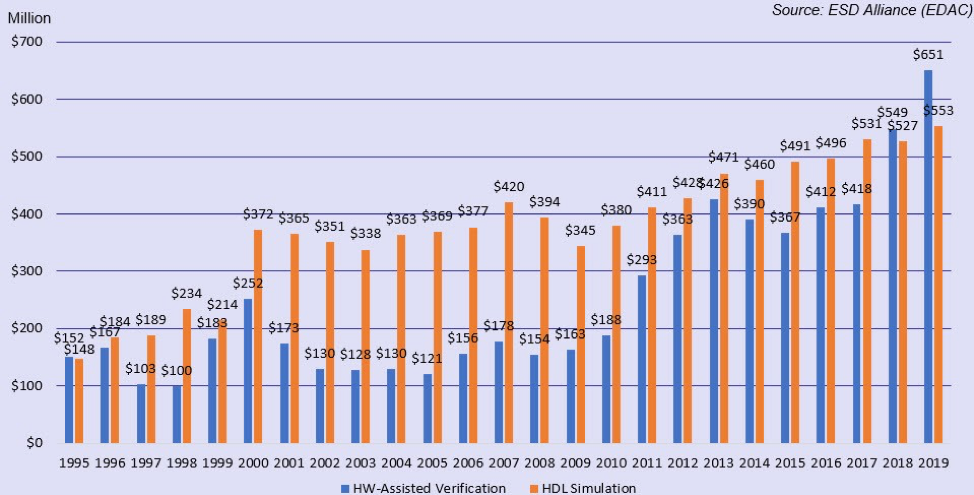Simulation is no longer up to the task of system-level verification, but making the switch to hardware-assisted verification can lead to some surprises if you do not fully plan ahead.
Brian Bailey, Semiconductor Engineering
October 29, 2020
Emulation is emerging as the tool of choice for complex and large designs, but companies that swap from simulation to emulation increasingly recognize this is not an easy transition. It requires money, time, and effort, and even then not everyone gets it right.
Still, there are significant benefits to moving from simulationto emulation, providing these systems can be utilized efficiently enough to warrant the investment. HDL simulation, which has been the industry workhorse for functional verification since the dawn of the semiconductor industry, started to run out of steam when processor performance stalled because HDL simulation was unable to benefit from multiple cores. So as designs got larger and HDL performance remained essentially constant, companies no longer could close their functional verification goals by buying more simulator licenses. They were forced, instead, to start using hardware-assisted verification (HAV). Today, companies spend more on emulators and physical prototyping systems than they do on simulation (see figure 1.)

[…]
For others, the cost of the emulation system is easily justified. “If you have very large and complex chips where the risk of re-spins is more costly than the investment required to acquire the emulation hardware, then this is an easy decision,” says Bipul Talukdar, director of applications engineering in North America for SmartDV. “Hardware prototyping via FPGAs is used extensively for less complex chips and is a lower-cost solution. HAV also is employed for post-silicon verification where FPGAs, coupled with verification IP, are used to test the product.”